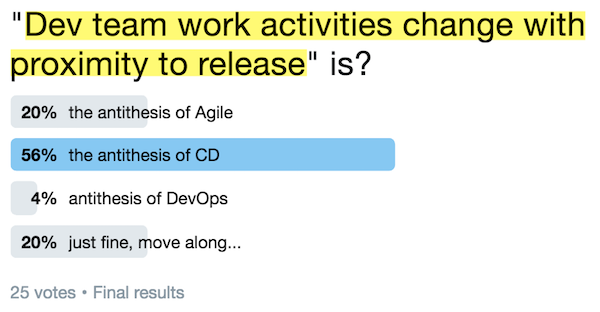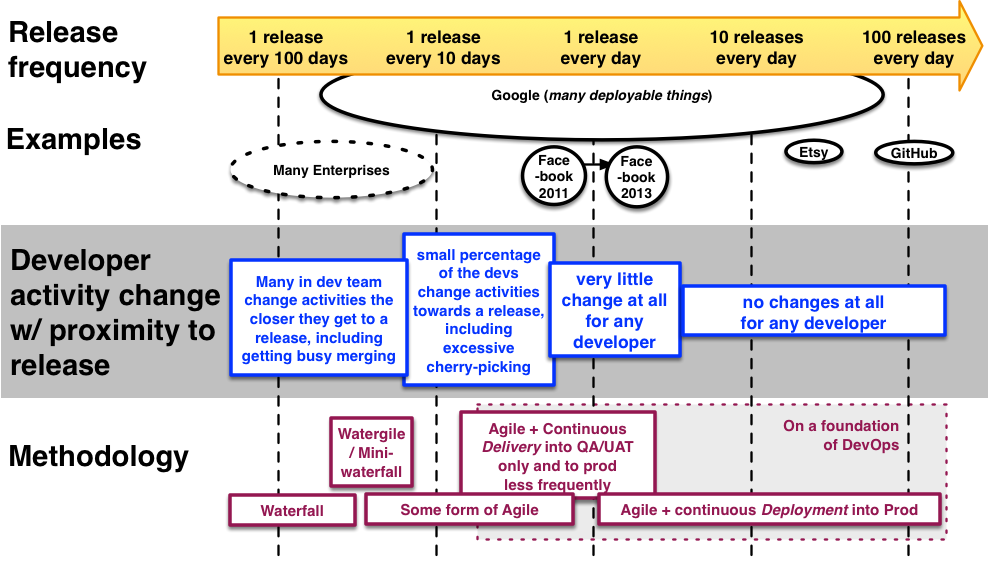Paul Hammant's Blog:
Developers Activities Shouldn't Change With Proximity To Release Dates
So my gut tells me that developer’s activities shouldn’t change with proximity to a release date.
I was not sure if it was an Agile thing, or Continuous Delivery, or DevOps. That’s because I’ve done all three for a decade or more now. I thought I’d ask Twitter:

It seems the consensus is developers changing daily activities with proximity to a release is the antithesis of CD.
OK, so taking a previous blog entry, Trunk Supporting Practices a little further, there is now one more thing that changes with release cadence:

(and I thought I’d add in ‘methodology’ too, seeing as I had not before)
What Activities? What ‘change’ with proximity to release?
Say the developers are used to chomping through story-cards a few days after the last release has gone out, and say it is four weeks between planned releases. How long does the enthusiasm for new features last? Is it a week or two before the tension mounts as people start to worry about the next release? Does the number of hours worked a day increase steadily towards the release date? Do more and more developers leave regular feature development and focus frantically on break/fix stabilization of the pending release?
Teams that are doing the ‘branch for release’ variant of Trunk-Based Development sometimes witness a last minute rush of cherry-pick merges into the release branch after it is cut. This is most often because the business can’t wait until the next release, which is a clue that release cadence is not high enough.
Teams doing legacy branching models have an additional activity that lowers the feature delivery rate for periods of time: merging. In the worst branching models, it is going to be a huge merge after the release, with plenty of room for mistakes that includes a chance of regression defects.
Published
Syndicated by DZone.com
Reads:
Categories
Comments formerly in Disqus, but exported and mounted statically ...
| Mon, 19 Jun 2017 | Graham |
Nice article. I particularly like the data you gathered. It would be interesting to ask with an 'all of the above' option. Infrequent releases play to human nature - to defer those release checks and tasks until the last moment. Until discipline and release frequency overpower these tendencies the last minute panic from uncertainty will change behaviors before release. I know its important to exercise but I am busy so I can start tomorrow. | |